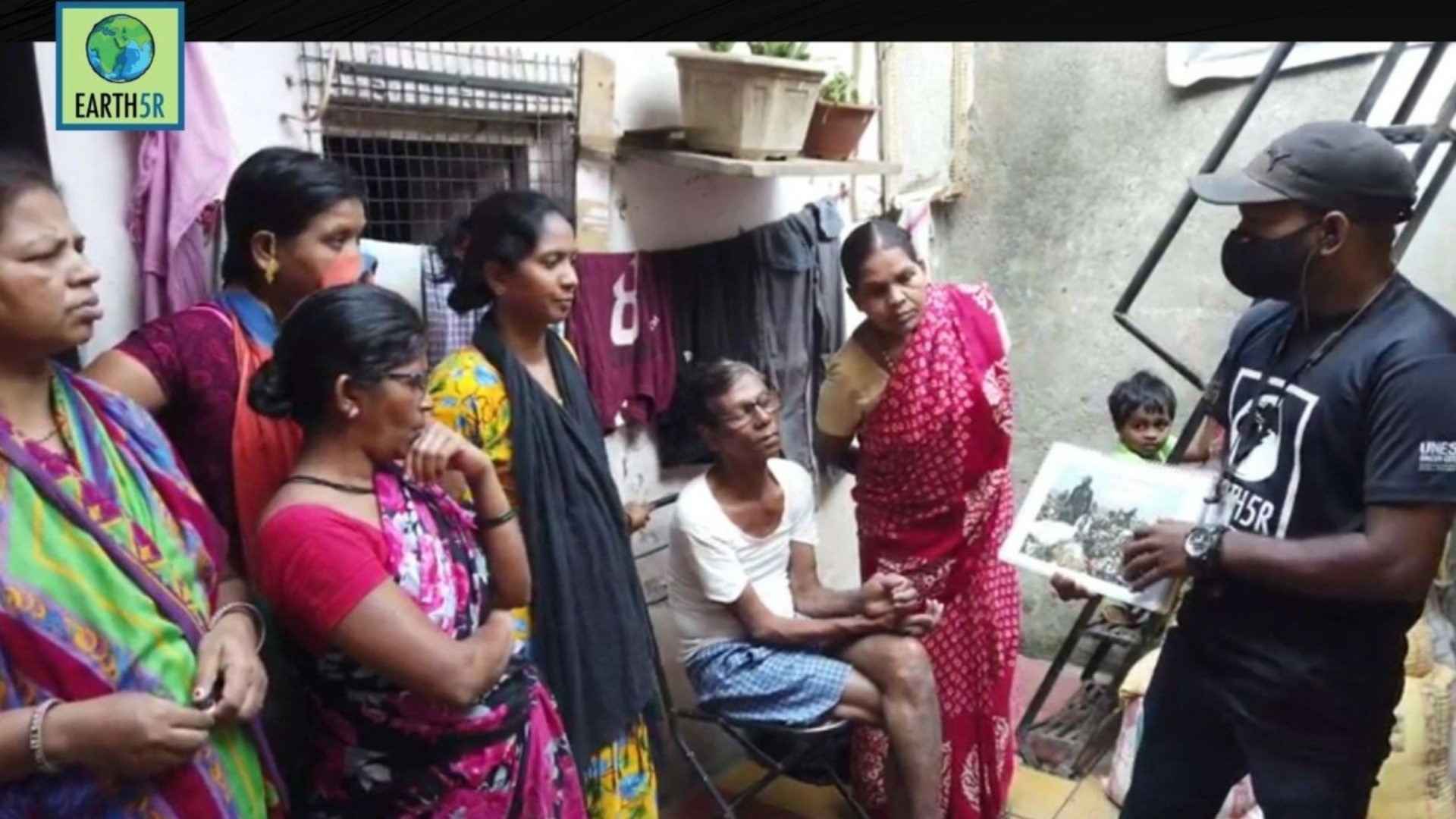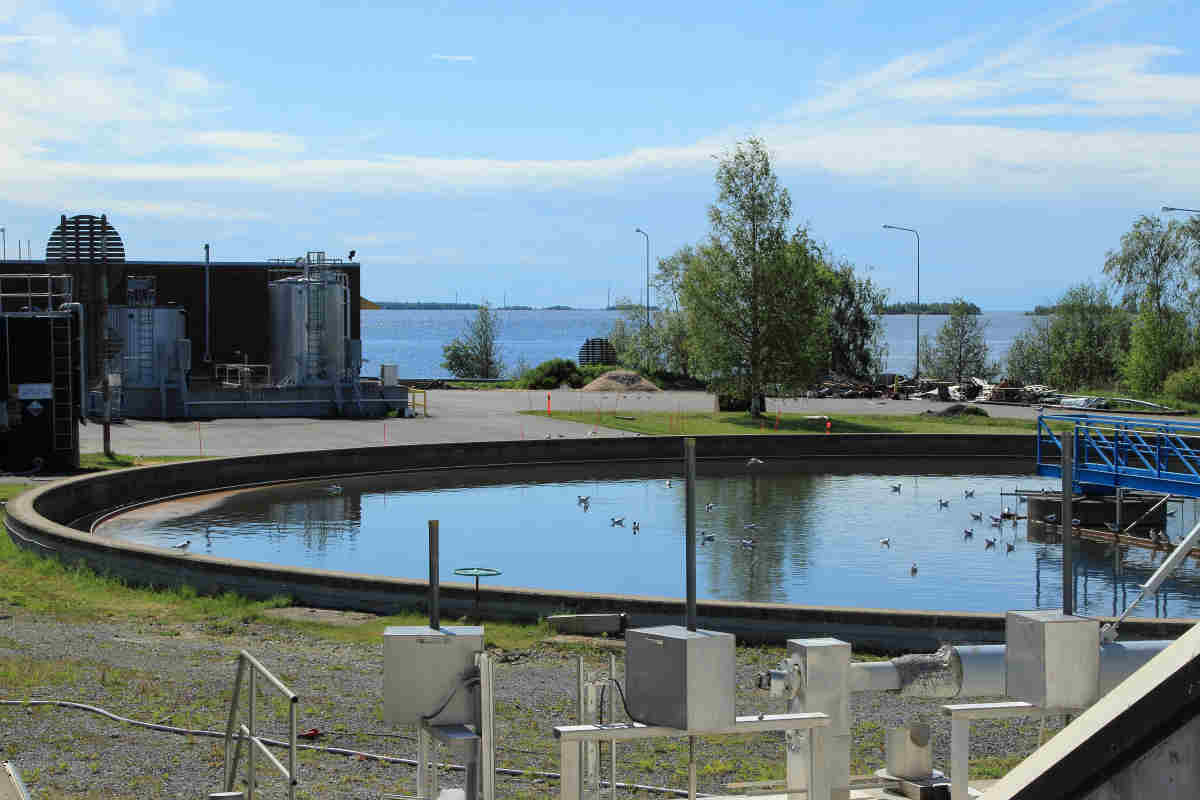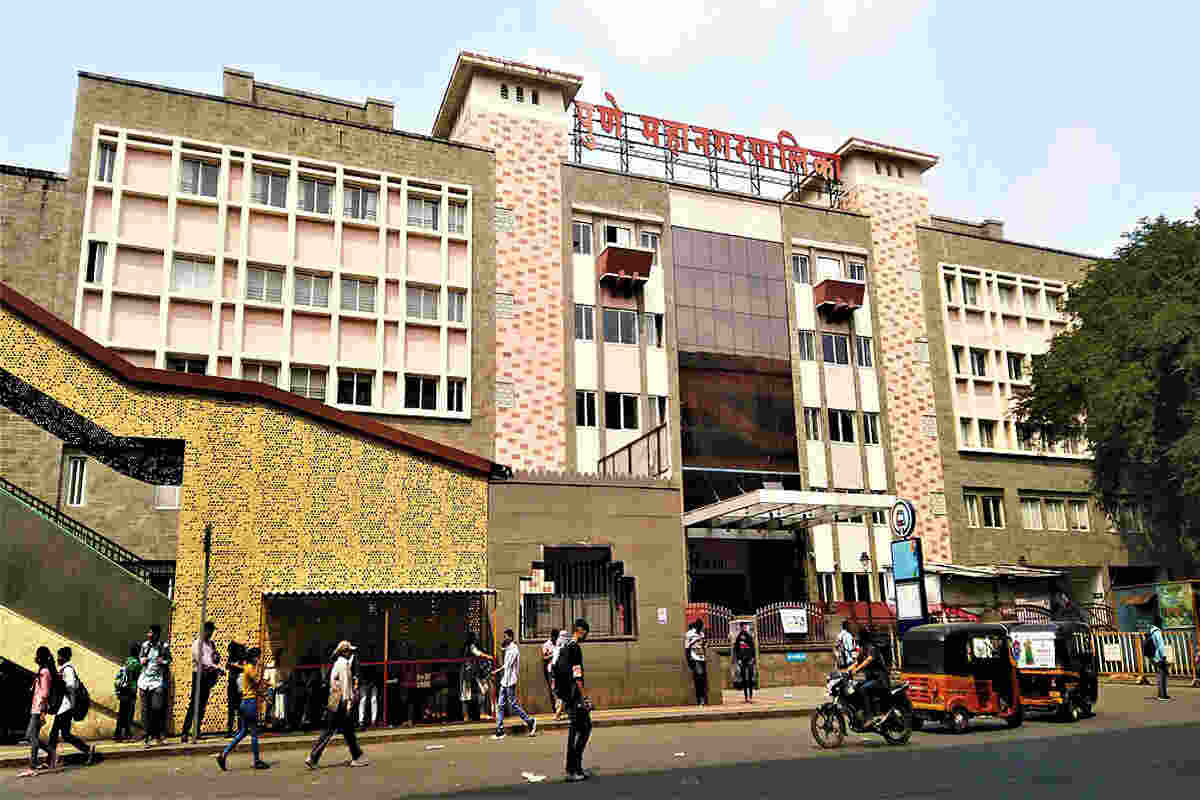The world is facing an escalating crisis of environmental degradation driven by unsustainable consumption patterns. Waste management has become one of the most pressing global challenges, with billions of tons of waste generated annually. Rapid urbanization, industrialization, and the proliferation of single-use plastics have exacerbated this issue, contributing to pollution, resource depletion, and climate change.
As the global population continues to grow, the need for effective, scalable solutions to mitigate environmental harm has never been more urgent. A circular economy offers a transformative solution to these challenges. Unlike the traditional linear economy, which follows a “take, make, dispose” model, a circular economy emphasizes resource efficiency, waste reduction, and the continuous reuse of materials.
This regenerative system prioritizes the reduction of waste and pollution by designing products and processes that encourage the lifecycle extension of resources, ultimately reducing the need for raw materials and conserving the planet’s ecosystems. Adopting circular practices is essential for achieving long-term sustainability. Earth5R is a pioneering organization committed to promoting responsible consumption and environmental sustainability through innovative, community-driven circular economy models.
Their approach empowers local communities to engage in sustainable practices, such as waste reduction, resource recovery, and promoting eco-friendly behaviors, thereby creating tangible, positive environmental change. This article focuses on analyzing Earth5R’s Responsible Consumption Model, specifically examining how its community-driven approach aligns with and contributes to the broader goals of a circular economy.
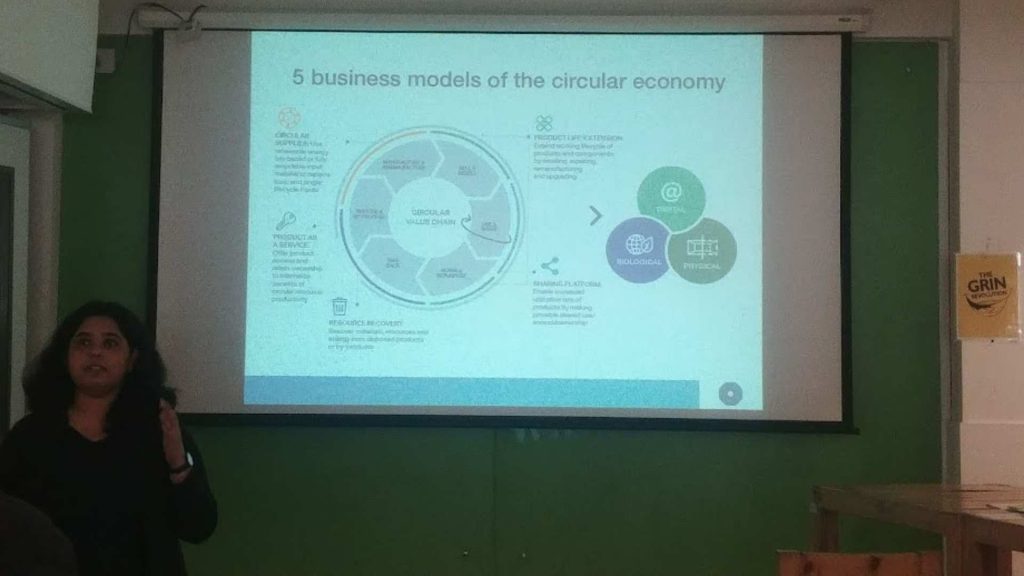
The Concept of Responsible Consumption
Defining Responsible Consumption
Responsible consumption refers to the conscious and deliberate choices made by individuals, businesses, and governments to reduce the environmental impact of their consumption habits. It is the practice of using resources in a way that ensures their long-term availability while minimizing waste, energy consumption, and ecological degradation. This concept emphasizes the importance of being mindful of the products we purchase, how we use them, and what happens to them after they have served their purpose.
The idea of responsible consumption is rooted in the principle of sustainability, which advocates for meeting the needs of the present without compromising the ability of future generations to meet their own needs. Responsible consumption involves reducing overconsumption, opting for more durable and efficient products, and supporting sustainable production practices. It also encompasses the idea of repair, reuse, and recycling, thus contributing to a shift away from the “throwaway culture” that characterizes much of modern society.
This practice plays a critical role in mitigating environmental damage by cutting down on waste generation, reducing the depletion of natural resources, and lowering the carbon footprint. For example, consumers making informed decisions to buy locally produced goods or choose items with minimal packaging contribute to reducing resource extraction, energy use, and transportation emissions.
Global Consumption Patterns and Their Environmental Impact
Global consumption patterns have shifted dramatically over the past century, with consumption levels rising sharply, especially in developed nations. According to the Global Footprint Network, humanity currently uses the equivalent of 1.75 Earths to meet its demands. This unsustainable rate of consumption is putting immense pressure on ecosystems, leading to deforestation, biodiversity loss, and the depletion of natural resources.
Scientific data illustrates the scale of the problem. The United Nations Environment Programme (UNEP) reports that the global production of goods and services contributes to 60% of global greenhouse gas emissions, with the largest contributors being the extraction of natural resources, energy production, and manufacturing.
Additionally, around 8 million metric tons of plastic waste enter the oceans each year, largely due to unsustainable consumer practices. This not only impacts marine life but also poses a significant threat to human health as plastic materials accumulate in the food chain.
The problem is further exacerbated by the growing demand for consumer goods, fueled by population growth and rising affluence. The World Economic Forum has highlighted that the world is expected to consume 50% more resources by 2030, resulting in even greater environmental pressures. This trend is unsustainable, as it relies on finite resources and is contributing to the accumulation of waste and pollution at unprecedented levels.
Connection to Circular Economy
Responsible consumption is not just an individual responsibility; it is an essential component of the broader circular economy model. A circular economy is a regenerative system designed to minimize waste and make the most of available resources. Unlike the traditional linear economy, which follows a “take, make, dispose” pattern, the circular economy focuses on reducing consumption, reusing resources, and recycling materials to extend the life cycle of products.
Responsible consumption serves as a crucial pillar of the circular economy by encouraging the shift away from disposable, one-time-use products to more sustainable, long-lasting alternatives. By prioritizing the use of durable goods, choosing products designed for repair or upgrade, and engaging in practices like sharing and reusing, individuals contribute to reducing the demand for new raw materials. This, in turn, reduces the environmental burden associated with production and waste disposal.
In this context, responsible consumption and the circular economy are intertwined, as both seek to reduce waste, minimize environmental impact, and encourage more thoughtful resource use. The shift from a linear to a circular economy requires not only systemic changes in production and business practices but also widespread adoption of responsible consumption behaviors among individuals and communities.
By adopting responsible consumption practices, individuals help create demand for more sustainable products and services, driving innovation in the market and supporting the transition toward a circular economy. This change is crucial if we are to tackle the interconnected crises of resource depletion, waste accumulation, and environmental degradation on a global scale.
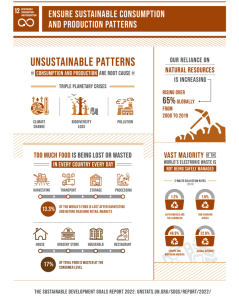
The infographic highlights the unsustainable consumption and production patterns that drive climate change, biodiversity loss, and pollution. It emphasizes the growing reliance on natural resources, high levels of food waste, and inadequate management of electronic waste worldwide.
Earth5R’s Model and Its Implementation
Core Principles of Earth5R’s Model
Earth5R, an organization dedicated to promoting sustainable practices, operates with a clear and comprehensive model focused on responsible consumption and resource management. The core principles of Earth5R’s Responsible Consumption Model center around reducing waste, encouraging recycling, promoting environmental education, and fostering a culture of sustainability. This model is designed to not only address environmental challenges but also to empower communities to actively participate in shaping a sustainable future.
At the heart of Earth5R’s model is the idea of circularity. The organization believes in the importance of designing products and systems that minimize waste, maximize resource use, and support long-term sustainability. Earth5R focuses on three key strategies: Reducing Consumption, Reusing Materials, and Recycling Waste. These strategies are aimed at addressing the critical environmental issue of waste generation, while also conserving valuable resources that are rapidly depleting in many parts of the world.
The organization’s long-term goals include reducing the carbon footprint of communities, minimizing waste production, and transitioning communities toward more sustainable living practices. Earth5R envisions a world where individuals, businesses, and entire communities prioritize sustainability in their everyday actions. Through the Responsible Consumption Model, Earth5R seeks to promote systems thinking, where the impact of every action is considered within a larger context of environmental and social well-being.
Community-Driven Approach
One of the most distinctive features of Earth5R’s model is its community-driven approach. Rather than adopting top-down mandates, Earth5R focuses on empowering local communities to take ownership of sustainability practices. This is achieved through a range of initiatives, from educational programs to grassroots engagement campaigns, which foster awareness and drive collective action on environmental issues.
Earth5R recognizes that sustainable practices can only take root when communities are actively involved in the process. The organization works with local residents, businesses, schools, and civic organizations to build capacity and encourage collaborative efforts. Earth5R’s initiatives often include training programs, workshops, and the establishment of local recycling hubs, where community members can drop off recyclable materials and learn about the importance of responsible waste management.
This community-driven approach not only builds environmental awareness but also strengthens social cohesion and resilience. By involving residents in sustainability efforts, Earth5R helps create a sense of shared responsibility and ownership over the environmental well-being of their neighborhoods. This results in more sustainable, long-term behavior changes, as the actions of individuals are amplified by the collective effort of the community.
Additionally, Earth5R’s community engagement efforts help create economic opportunities by promoting local recycling industries and green businesses. This not only supports the local economy but also makes sustainability more accessible and tangible for everyday people.
Case Studies/Examples of Earth5R Projects
Several of Earth5R’s projects serve as prime examples of its community-driven model in action, demonstrating how local engagement can drive significant environmental and social change. Two standout initiatives, the Earth5R Plastic Recycling Program and the School Waste Management Program, showcase how Earth5R integrates sustainability efforts with community empowerment to foster long-term environmental resilience.
Earth5R Plastic Recycling Program
The Earth5R Plastic Recycling Program was launched across multiple cities to address the growing issue of plastic waste. This initiative engaged local communities in waste segregation at the source, ensuring plastic was collected, processed, and repurposed into new products instead of being discarded or incinerated. Unlike traditional waste management models, Earth5R’s approach prioritized recycling, effectively closing the loop on plastic waste.
By establishing local recycling centers, the program created green jobs in waste sorting, transportation, and processing, supporting both environmental sustainability and the local economy. The program’s impact was evident in reduced plastic litter, leading to cleaner streets and lower pollution levels in participating cities. Earth5R collaborated with local governments and businesses to promote recycling and demonstrate the benefits of community-driven waste management.
Beyond environmental gains, the initiative contributed to economic growth by generating employment and fostering new recycling businesses. The program’s success highlighted the potential for replicating similar models in other regions, reinforcing the importance of circular economy practices in tackling global plastic pollution.
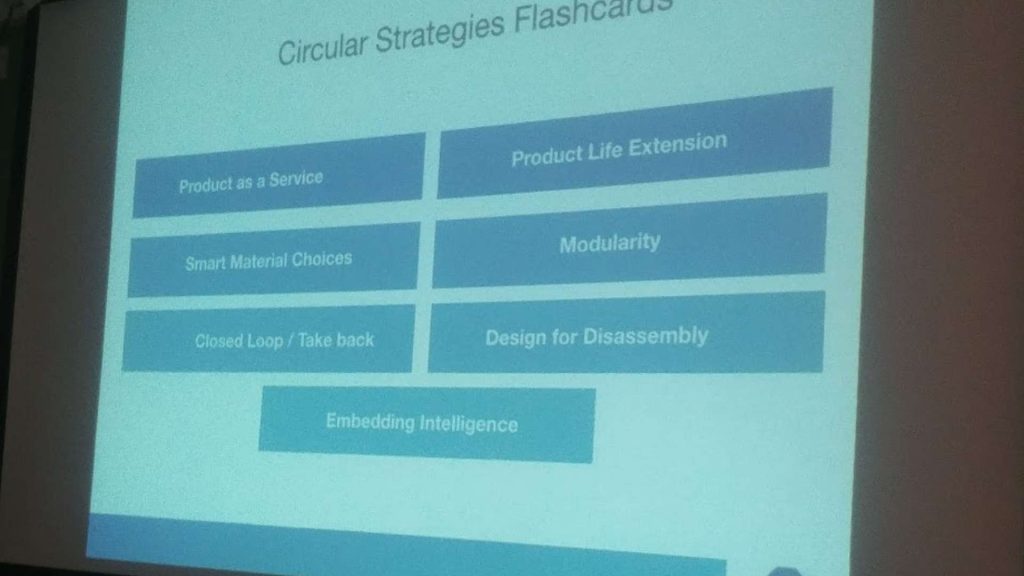
School Waste Management Program
Earth5R’s School Waste Management Program showcases its commitment to community-driven sustainability by integrating waste management and sustainability into school curricula. Partnering with schools, Earth5R provided hands-on learning experiences, teaching students about waste segregation, composting, recycling, and responsible consumption.
The program established waste segregation systems and composting stations on school grounds, allowing students to actively participate in reducing their school’s environmental footprint. Beyond classroom education, Earth5R engaged students in interactive activities like waste sorting, designing eco-friendly solutions, and leading campaigns to reduce plastic use and waste generation.
By involving students in these initiatives, Earth5R ensured they not only learned about sustainability but also became advocates for it. Many students influenced their families to adopt eco-friendly habits such as composting and reducing food waste.
This initiative created a lasting impact, as students became ambassadors of sustainability within their communities. By targeting the younger generation, Earth5R is shaping future consumers who are more environmentally conscious, fostering a culture of sustainability that extends beyond schools and into broader society.
Community-Driven Approach: Addressing Environmental and Social Issues
Earth5R’s community-driven sustainability projects go beyond addressing environmental issues—they also create significant social and economic benefits. The Plastic Recycling Program reduced waste while fostering local pride and responsibility. It encouraged collaboration among residents, businesses, and authorities, promoting a shared vision for a cleaner, more sustainable community.
Similarly, the School Waste Management Program strengthened social bonds within schools and extended into families, creating a network of environmentally conscious citizens. By integrating education, these initiatives empowered students with the knowledge and skills to participate in environmental conservation and even pursue careers in sustainability. Earth5R’s holistic approach links environmental, social, and economic benefits, ensuring long-term impact.
By equipping communities with the right tools and knowledge, Earth5R empowers them to drive sustainable change. This model fosters environmental stewardship while also generating economic opportunities, proving that grassroots efforts can lead to systemic transformation.
The success of these projects demonstrates the power of local engagement in global sustainability efforts. As scalable models, they provide a blueprint for communities worldwide to transition toward a circular economy and a more sustainable future
Integration with Circular Economy
Earth5R’s model is deeply aligned with the principles of the circular economy. The organization’s focus on reducing consumption, reusing materials, and recycling waste mirrors the core tenets of a circular system, which aims to close the loop on resource use and minimize waste.
For example, in its Community Plastic Collection Initiatives, Earth5R doesn’t just collect plastic waste; it actively works to ensure that the collected plastic is processed and reused to create new products, such as eco-friendly bricks, bags, or building materials. This effort contributes directly to the circular economy by ensuring that materials are reused rather than disposed of, reducing the need for new plastic production.
Additionally, Earth5R’s Zero Waste Communities Program aims to shift local communities towards zero-waste lifestyles, helping them to reduce the amount of waste they generate and divert it into recycling and composting streams. This initiative contributes to the circular economy by reducing the need for landfills and incineration, ensuring that materials like organic waste and metals are either returned to the earth or reused in new products.
Research findings from similar initiatives have shown that community-driven recycling and waste management programs not only reduce the environmental impact of waste but also create a positive economic cycle. For example, the Ellen MacArthur Foundation has highlighted that the circular economy could generate $4.5 trillion in economic benefits by 2030, as industries reduce waste, use resources more efficiently, and design products with longer lifecycles.
Earth5R’s initiatives embody this vision by empowering communities to actively participate in the circular economy, demonstrating how local efforts can contribute to global sustainability goals. In conclusion, Earth5R’s Responsible Consumption Model is a compelling example of how community-driven initiatives can be integrated into the broader circular economy framework. By prioritizing education, empowerment, and collaboration, Earth5R is making a significant contribution to both local sustainability and global environmental goals.
Scientific Evidence and Research Findings
Impact of Circular Economy on Sustainability
The circular economy (CE) is widely regarded as a transformative solution for advancing global sustainability. Its focus on reducing waste, promoting resource efficiency, and lowering environmental impact aligns with the increasing need to address the planet’s ecological challenges. Scientific evidence supports the idea that circular economy practices can substantially reduce waste generation, lower carbon footprints, and optimize resource management.
One of the most significant benefits of adopting circular economy principles is waste reduction. According to a study by the Ellen MacArthur Foundation, transitioning from a linear to a circular economy could reduce global waste generation by 40%, drastically cutting the amount of material sent to landfills or incinerators. This is achieved through practices such as recycling, remanufacturing, and upcycling, which keep materials in circulation for longer periods.
The focus on maintaining the value of products, materials, and resources in the economy leads to less need for extraction of raw materials, thus preventing depletion of natural resources. Moreover, the circular economy has been shown to reduce carbon emissions. The International Resource Panel, a body established by the United Nations Environment Programme (UNEP), estimates that shifting to a circular economy could reduce global greenhouse gas emissions by 9.3 billion tons by 2050.
By promoting energy-efficient designs and reducing the need for raw material extraction, circular economy practices minimize the energy-intensive processes associated with manufacturing and transportation. For example, products that are designed for longevity or easy repair significantly reduce the need for new product manufacturing, which is typically resource- and energy-heavy. In terms of resource management, circular economy principles enhance efficiency by encouraging the use of renewable, recycled, and sustainable materials.
Studies show that a shift towards circular models could significantly reduce the reliance on finite resources, such as metals, water, and fossil fuels. For instance, a study by the World Economic Forum highlights that transitioning to a circular economy could reduce global demand for virgin materials by up to 30%, which would help mitigate issues related to resource scarcity and environmental degradation.
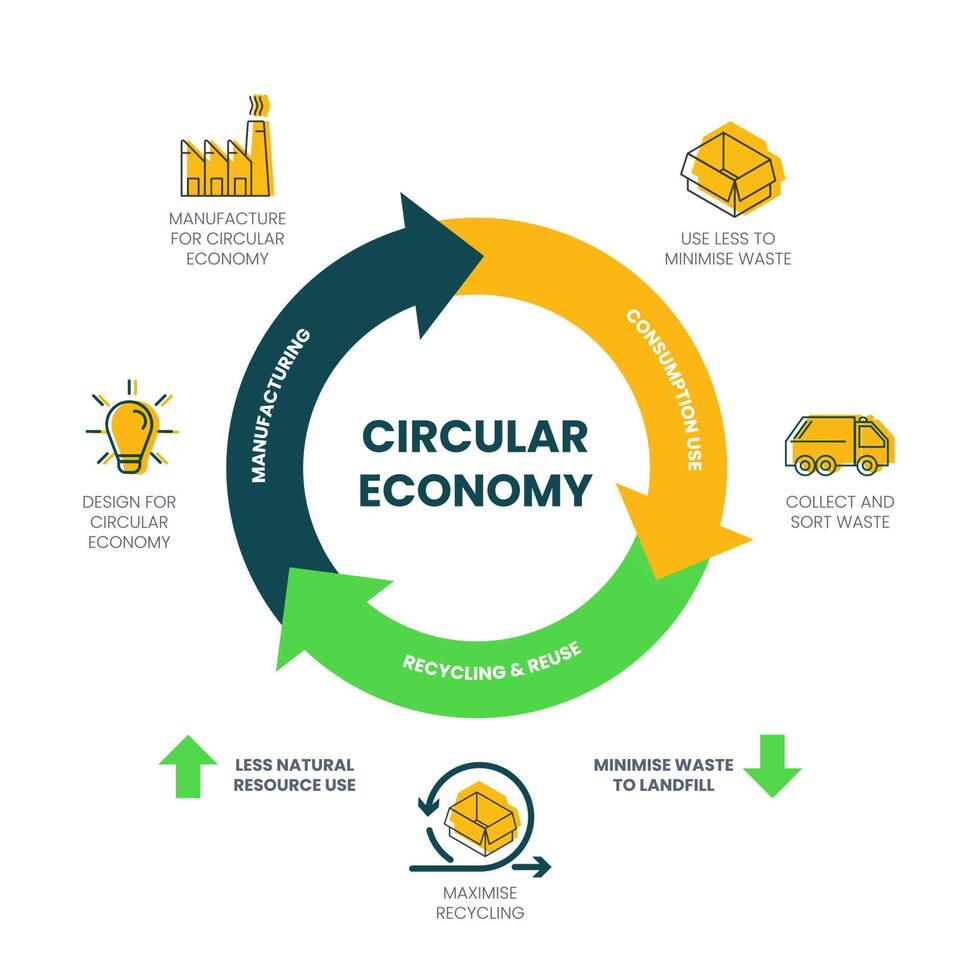
The infographic illustrates the circular economy process, emphasizing sustainable manufacturing, responsible consumption, and efficient recycling to minimize waste. It highlights key steps such as designing for circularity, reducing resource use, and maximizing recycling to create a sustainable loop.
Studies on Community-Driven Models
Research has increasingly emphasized the role of community-driven models in enhancing the sustainability of circular economy initiatives. Community engagement is crucial for the successful adoption of circular economy practices, as local populations can act as agents of change, ensuring the sustainability of the models. A study published in the journal Sustainability in 2020 found that community-driven models not only foster greater environmental awareness but also result in higher rates of participation in recycling and waste reduction programs.
The study highlighted that communities with active involvement in environmental initiatives are more likely to adopt sustainable practices, which, in turn, leads to greater success in waste management and resource conservation. This aligns with the principles of the circular economy, where collective efforts can maximize the benefits of resource efficiency and waste reduction.
Another research paper, published by the European Environment Agency, demonstrates that community-driven waste management programs, such as local recycling and composting initiatives, lead to higher recycling rates and better waste segregation practices. These programs empower communities to take ownership of their waste and resources, leading to more responsible consumption habits and reduced environmental impacts.
Additionally, community participation fosters a sense of social responsibility, which can be crucial for ensuring the long-term sustainability of circular economy practices. Further research by the Circular Economy Research Network in 2019 found that involving communities in the design and implementation of circular economy models can lead to more effective, locally tailored solutions.
By incorporating local knowledge and preferences into the decision-making process, these models are better suited to the specific needs and challenges of different regions, making them more sustainable and easier to maintain.
Quantitative Data: Effectiveness of Earth5R’s Model
The effectiveness of Earth5R’s community-driven circular economy model can be substantiated through quantitative data from its various projects. For example, Earth5R’s Plastic Recycling Program has led to the collection and recycling of over 1,500 tons of plastic waste in urban communities.
By working with local stakeholders to implement recycling infrastructure and conducting educational campaigns, the program has not only diverted significant amounts of waste from landfills but has also created 200+ green jobs in the recycling and waste management sectors. This showcases the dual benefit of Earth5R’s approach: reducing waste while fostering local economic development.
In terms of environmental impact, Earth5R’s Zero Waste Communities Program has successfully reduced waste generation in participating communities by 35%, according to internal data collected over the past five years. By implementing waste segregation, composting, and recycling initiatives at the community level, Earth5R has helped local residents divert a significant portion of their waste from incineration and landfills.
Additionally, the program has reduced carbon emissions associated with waste management by approximately 25%, which aligns with broader studies that show the environmental benefits of waste reduction and recycling. Furthermore, the School Waste Management Program has had a measurable impact on sustainability education. Over 50,000 students across multiple schools in India have participated in Earth5R’s environmental education initiatives.
Feedback surveys from these students indicate that 80% have adopted more sustainable habits at home, including waste segregation, reducing single-use plastics, and composting organic waste. This program has created a ripple effect, where students are not only changing their own behaviors but also influencing their families and communities to adopt greener practices.
The success of these projects is a testament to the power of community-driven initiatives within the circular economy framework. By engaging local populations and tailoring solutions to specific community needs, Earth5R has demonstrated the tangible benefits of circular practices in real-world scenarios, contributing to both environmental sustainability and social well-being. The quantitative data from Earth5R’s initiatives showcases the scalability and effectiveness of circular economy models that prioritize community involvement.
In conclusion, the scientific evidence supporting the circular economy, along with the research on community-driven models, highlights the significant impact that localized, participatory efforts can have on achieving sustainability goals. Earth5R’s data further substantiates the effectiveness of its community-driven circular economy initiatives, proving that grassroots engagement is crucial for the success and long-term sustainability of circular systems.
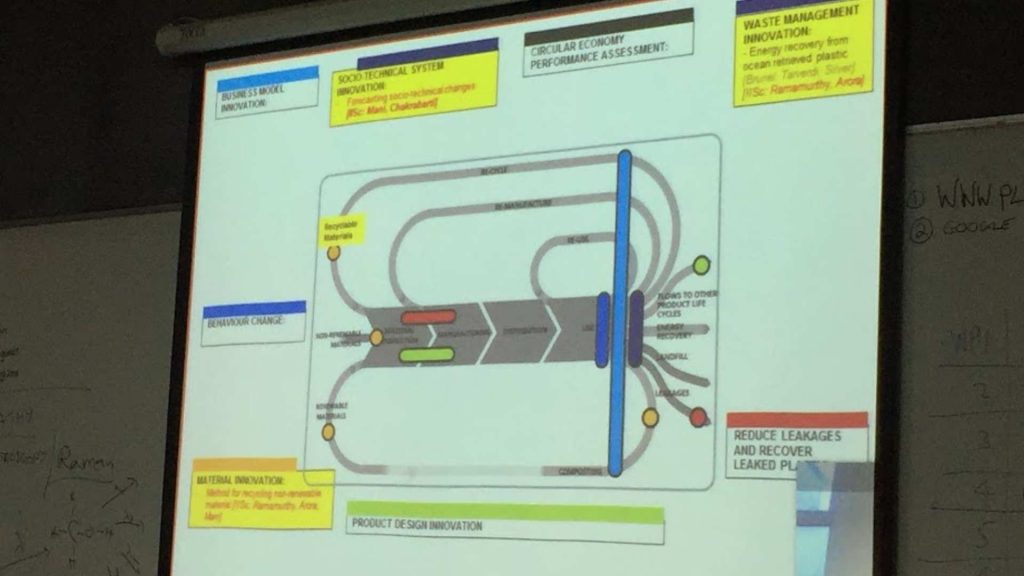
Challenges and Opportunities
Challenges to Implementing Community-Driven Circular Economy Models
While the community-driven circular economy models, such as Earth5R’s initiatives, offer significant environmental and social benefits, there are several challenges that can hinder their implementation and success.
Lack of Awareness and Education
One of the primary obstacles to the widespread adoption of circular economy practices is the lack of awareness and understanding of sustainability issues at the community level. Many individuals and businesses still operate within a linear consumption model, where products are used and discarded without considering their environmental impact.
Without adequate education and outreach, communities may not fully grasp the benefits of recycling, composting, and responsible consumption. Earth5R’s educational programs are essential in overcoming this barrier, but broader, sustained efforts are needed to raise awareness across all demographics.
Limited Funding and Resources
Implementing community-driven circular economy models often requires significant initial investment in infrastructure, such as recycling facilities, composting stations, and educational campaigns. However, securing funding for these projects can be challenging, especially in economically disadvantaged regions.
Earth5R has managed to secure resources through partnerships with local governments and businesses, but for such models to scale, consistent and diversified funding sources must be identified. Many communities may lack the financial means to establish or maintain recycling programs or green jobs, which could hinder the long-term success of these initiatives.
Infrastructure Gaps
Effective circular economy practices require robust infrastructure to collect, sort, process, and recycle materials. In many parts of the world, especially in underdeveloped or rural areas, waste management infrastructure is either inadequate or non-existent.
Earth5R’s model addresses this by establishing local collection points and providing recycling education, but scaling this model requires overcoming significant logistical challenges. Inadequate infrastructure can lead to inefficiencies in the collection and processing of recyclable materials, resulting in contamination and lower recycling rates.
Policy and Regulatory Barriers
Policy and regulatory frameworks in many regions are still designed around a linear economy, with limited support for circular practices. For example, local regulations may not incentivize recycling or composting, or there may be insufficient policies in place to ensure that businesses adhere to sustainable practices.
Governments often lack the capacity or political will to introduce policies that favor circular economy models, further complicating the transition. Without adequate policy support, it becomes difficult for community-driven models to thrive on a larger scale, as businesses may not be incentivized to invest in sustainable practices, and individuals may lack the motivation to engage in responsible consumption.
Opportunities for Scaling Up
Despite the challenges, there are numerous opportunities to scale Earth5R’s community-driven circular economy model to more communities and regions. The success of Earth5R’s initiatives in urban and peri-urban areas provides a strong foundation for expansion, especially in regions facing severe environmental challenges, such as plastic pollution or waste mismanagement.
Expanding Geographic Reach
Earth5R can scale its model by extending its projects to more cities, rural areas, and even low-income communities. While urban regions have seen positive outcomes from Earth5R’s initiatives, rural areas often lack the necessary infrastructure for waste management and circular economy practices.
Expanding the model to these regions could help address gaps in waste disposal and recycling services while also creating green jobs. This expansion could be achieved through collaborations with local governments, non-profit organizations, and international development agencies, which would help secure resources and overcome infrastructure limitations.
Adapting to Different Cultural and Socioeconomic Contexts
Earth5R’s model is highly adaptable to different cultural and socioeconomic contexts. The success of circular economy models in various regions hinges on their ability to align with local values, practices, and available resources. For example, in communities with a strong agricultural tradition, composting organic waste and creating fertilizers could resonate well.
In urban areas, the focus might be more on recycling plastic and reducing e-waste. By customizing initiatives to local needs, Earth5R can ensure greater participation and engagement, making the model more sustainable and impactful across diverse contexts.
Leveraging Technology
Another opportunity for scaling up Earth5R’s model is through the use of technology. Digital platforms could be used to streamline waste collection, track recycling rates, and connect individuals and businesses with recycling centers.
Apps that facilitate waste segregation or provide real-time data on waste management could further enhance the efficiency and reach of circular economy practices. Earth5R could also explore technological innovations in waste processing, such as advanced recycling methods or waste-to-energy technologies, to improve the effectiveness and sustainability of their initiatives.
Potential for Policy Influence
Earth5R’s model has significant potential to influence policy changes at various levels. By demonstrating the real-world benefits of community-driven circular economy practices, Earth5R can serve as a model for local and national policymakers seeking to integrate sustainability into their regulatory frameworks.
Local Policy Advocacy
Earth5R’s projects can inform local governments about the tangible benefits of supporting circular economy initiatives. Through partnerships with municipalities, Earth5R can advocate for policies that promote recycling, waste segregation, and sustainable consumption.
For example, local governments could be encouraged to implement incentives for businesses that adopt sustainable practices or create regulations that require waste separation at the household level. Earth5R’s community-driven model also offers a template for other cities to develop local policies that align with circular economy goals.
National Policy Support
On a larger scale, Earth5R can work with national governments to help shape policies that promote circular economy practices across the country. This could involve advocating for national recycling standards, policies that incentivize the use of renewable materials, or legislation that limits single-use plastic production. As countries aim to meet global sustainability goals, Earth5R’s model provides a proven framework for integrating circular practices into national economies.
Global Advocacy for Circular Economy Policies
As Earth5R’s model gains traction, it could serve as an example for international policy frameworks aimed at supporting the circular economy. By working with global organizations, such as the United Nations or the World Economic Forum, Earth5R could influence global policy discussions on sustainability and environmental conservation. This could include advocating for global agreements to reduce waste, promote resource efficiency, and increase recycling rates across all nations.
In conclusion, while there are challenges to implementing and scaling community-driven circular economy models, opportunities abound for expanding these initiatives. Earth5R’s model can be adapted to different communities, leveraging technology and policy advocacy to broaden its impact. By addressing funding gaps, infrastructure needs, and regulatory barriers, Earth5R has the potential to drive systemic change, ultimately influencing policy and contributing to a more sustainable and circular global economy.
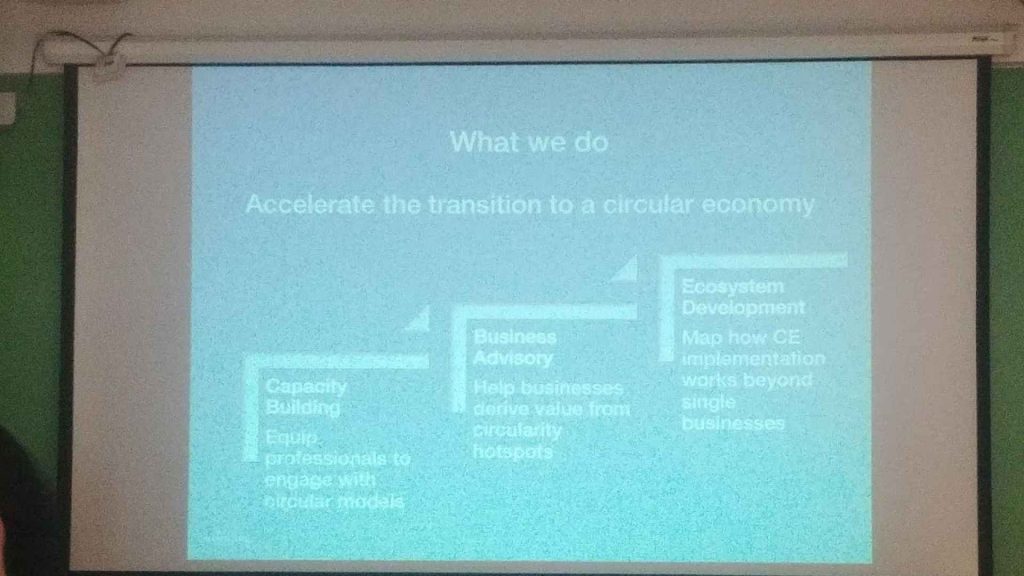
Empowering Communities for a Sustainable Circular Future
Summary of Key Points
This article has explored the key aspects of Earth5R’s Responsible Consumption Model and its integration within the broader framework of the circular economy. The model, with its focus on community-driven initiatives, stands as a testament to the power of local engagement in driving sustainability. Through its various projects, such as the Plastic Recycling Program and School Waste Management Program, Earth5R has successfully demonstrated the positive impact of involving communities in waste management and sustainability efforts.
These initiatives not only reduce environmental harm but also create social and economic benefits, such as green jobs and heightened environmental awareness. At its core, Earth5R’s approach exemplifies the principles of the circular economy—reducing waste, conserving resources, and ensuring that materials are kept in use for as long as possible.
By emphasizing responsible consumption, Earth5R has created a model that empowers individuals and communities to take ownership of their environmental impact, offering a scalable solution that could be adapted to various cultural and socioeconomic contexts.
Future Outlook
Looking ahead, the future of circular economy models is promising, with increasing recognition of their role in addressing global sustainability challenges. Responsible consumption will be central to these efforts, as individuals, businesses, and governments begin to prioritize resource conservation and waste reduction. As the demand for sustainable solutions grows, community-driven initiatives like Earth5R’s will become even more essential in fostering widespread change.
FAQs on Earth5R’s Responsible Consumption Model: Community-Driven Circular Economy in Action
What is a circular economy?
A circular economy is an economic model aimed at eliminating waste and promoting the continual use of resources. It focuses on reusing, recycling, and refurbishing products, reducing the need for raw material extraction and minimizing environmental impact.
What is Earth5R’s Responsible Consumption Model?
Earth5R’s Responsible Consumption Model emphasizes community-driven initiatives for waste management, recycling, and sustainable consumption. It focuses on educating and empowering communities to take ownership of their environmental impact.
How does Earth5R involve communities in sustainability?
Earth5R engages communities through education, waste management programs, recycling initiatives, and hands-on activities. The organization works to instill sustainable practices in everyday life, ensuring local populations actively participate in environmental solutions.
Why is responsible consumption important?
Responsible consumption helps reduce waste, conserve natural resources, lower carbon footprints, and protect ecosystems. It promotes mindful purchasing, reusing, and recycling, leading to more sustainable production and consumption patterns.
What are the benefits of the circular economy?
The circular economy reduces waste, optimizes resource use, reduces carbon emissions, and prevents environmental degradation. It also fosters job creation, particularly in green industries like recycling and renewable energy.
How does Earth5R promote circular economy practices?
Earth5R promotes circular economy practices by creating community-driven programs that focus on waste segregation, recycling, composting, and repurposing products. The organization encourages businesses and individuals to shift towards sustainable practices.
What role does education play in Earth5R’s model?
Education is a core element of Earth5R’s model. Through workshops, school programs, and awareness campaigns, Earth5R educates communities on the importance of responsible consumption, waste segregation, and recycling.
Can Earth5R’s model be applied in rural areas?
Yes, Earth5R’s model is adaptable and can be applied in rural areas. The organization tailors its projects to local contexts, working with communities to create sustainable waste management systems even in regions with limited infrastructure.
What are some examples of Earth5R’s successful projects?
Some successful projects include the Plastic Recycling Program, where communities are engaged in plastic waste segregation and recycling, and the School Waste Management Program, where students learn about waste segregation and sustainability.
How does Earth5R’s model align with global sustainability goals?
Earth5R’s model aligns with the United Nations’ Sustainable Development Goals (SDGs), particularly those focused on responsible consumption and production, climate action, and sustainable communities.
What are the challenges in implementing community-driven circular economy models?
Challenges include lack of awareness, insufficient funding, inadequate infrastructure, and policy barriers. Overcoming these challenges requires collaborative efforts between communities, businesses, and governments.
How can policymakers support circular economy practices?
Policymakers can support circular economy practices by creating incentives for businesses to adopt sustainable models, implementing regulations for waste management, and investing in recycling infrastructure and education.
How does Earth5R measure the impact of its projects?
Earth5R measures the impact of its projects through data on waste diversion, recycling rates, job creation, and environmental improvements. The organization also conducts surveys and gathers feedback from participants.
What are the social benefits of circular economy practices?
Social benefits include job creation, particularly in green industries, improved public health through reduced pollution, and strengthened community engagement as people take an active role in sustainability efforts.
How does Earth5R engage businesses in its initiatives?
Earth5R engages businesses by providing resources, partnerships, and incentives to help them adopt circular economy practices, such as reducing waste, using sustainable materials, and implementing recycling programs.
Can circular economy models be applied in all industries?
Yes, circular economy models can be applied across industries, from manufacturing and construction to fashion, food, and electronics. Each sector can implement strategies for reducing waste, recycling materials, and promoting sustainable production.
What is the role of technology in circular economy practices?
Technology plays a key role in optimizing waste management systems, improving recycling processes, and enabling more efficient use of resources. Digital platforms can also facilitate waste tracking and community engagement.
How does Earth5R’s model create economic opportunities?
Earth5R’s model creates green jobs in waste management, recycling, and sustainable production. These jobs contribute to local economies and empower communities to take ownership of their environmental impact.
What is the connection between responsible consumption and the circular economy?
Responsible consumption is a cornerstone of the circular economy. By adopting sustainable consumption practices—such as buying fewer, more durable products, reusing items, and recycling—we contribute to keeping materials in use and reducing environmental harm.
How can individuals contribute to the circular economy?
Individuals can contribute by reducing waste, purchasing products designed for longevity, recycling, composting, and supporting businesses that prioritize sustainable practices. Educating themselves and others about circular economy principles also helps drive collective action.
Call to Action
The urgency for a collective shift towards sustainability cannot be overstated. To truly address the environmental challenges we face, communities, policymakers, and businesses must come together to amplify the impact of circular economy models. By fostering collaboration across these sectors, we can ensure that initiatives like Earth5R’s are supported and scaled to reach more people and places. Increased awareness, funding, and policy support are vital to accelerating the transition to a circular economy.
Every individual has a role in adopting more responsible consumption habits, whether through reducing waste, recycling, or supporting sustainable businesses. Businesses must prioritize sustainable practices, and governments must create policies that incentivize circular solutions. As we look to the future, it is clear that the circular economy, driven by shared responsibility and environmental stewardship, is the pathway to a more sustainable, resilient world for generations to come.
~Authored by Ameya Satam

